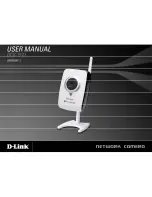
2
SERIES 3000 MKII TECHNICAL MANUAL
S3KMKIIMAN_MAN0878_Issue 6_01/2014
1. Safety
Ensure that this Operating Manual is read and understood
BEFORE
installing / operating /
maintaining the equipment.
Pay particular attention to
Warnings
and
Cautions
.
All document
Warnings
are listed here and repeated where appropriate at the start of the relevant
chapter(s) of this Operating Manual.
Cautions
appear in the sections / sub-sections of the document where they apply.
Warnings
Series 3000 MkII is designed for installation and use in Zone 1 or 2 or 21 or 22 hazardous
areas in Europe and Class I Division 1 or 2 and Class II Division 1 or 2 area applications
in North America.
Installation must be in accordance with the recognized standards of the appropriate
authority in the country concerned.
Access to the interior of the detector, when carrying out any work, must only be
conducted by trained personnel.
Before carrying out any work ensure local regulations and site procedures are followed.
Appropriate standards must be followed to maintain the overall certification of the detector.
To reduce risk of ignition of hazardous atmospheres, conduit runs must have a seal fitting
connected within 18 inches of the enclosure.
To reduce the risk of ignition of hazardous atmosphere, de-classify the area or
disconnect the equipment from the supply circuit before opening the detector enclosure.
Keep assembly tightly closed during operation.
Never attempt to open a junction box / enclosure in potentially hazardous atmospheres.
The detector must be earthed / grounded for electrical safety and to limit the effects
of radio frequency interference. An earth / ground point is provided inside and outside the
unit. The internal grounding shall be used as the primary equipment ground. The external
terminal is only a supplemental bonding connection where local authorities permit or
require such a connection.
The enclosure of the remotely mounted sensor assembly contains Aluminium.
Care must be taken to avoid ignition hazards due to impact or friction when installed
in a Zone 1 location.
Take care when handling sensors as they may contain corrosive solutions.
Do not tamper or in any way disassemble the sensor.
Do not expose to temperatures outside the recommended range.
Do not expose sensor to organic solvents or flammable liquids.
At the end of their working life, sensors must be disposed of in an environmentally
safe manner. Disposal should be according to local waste management requirements
and environmental legislation.
Alternatively, sensors may be securely packaged and returned to
Honeywell Analytics clearly marked for environmental disposal.
Electrochemical cells should NOT be incinerated as they may emit toxic fumes.



































